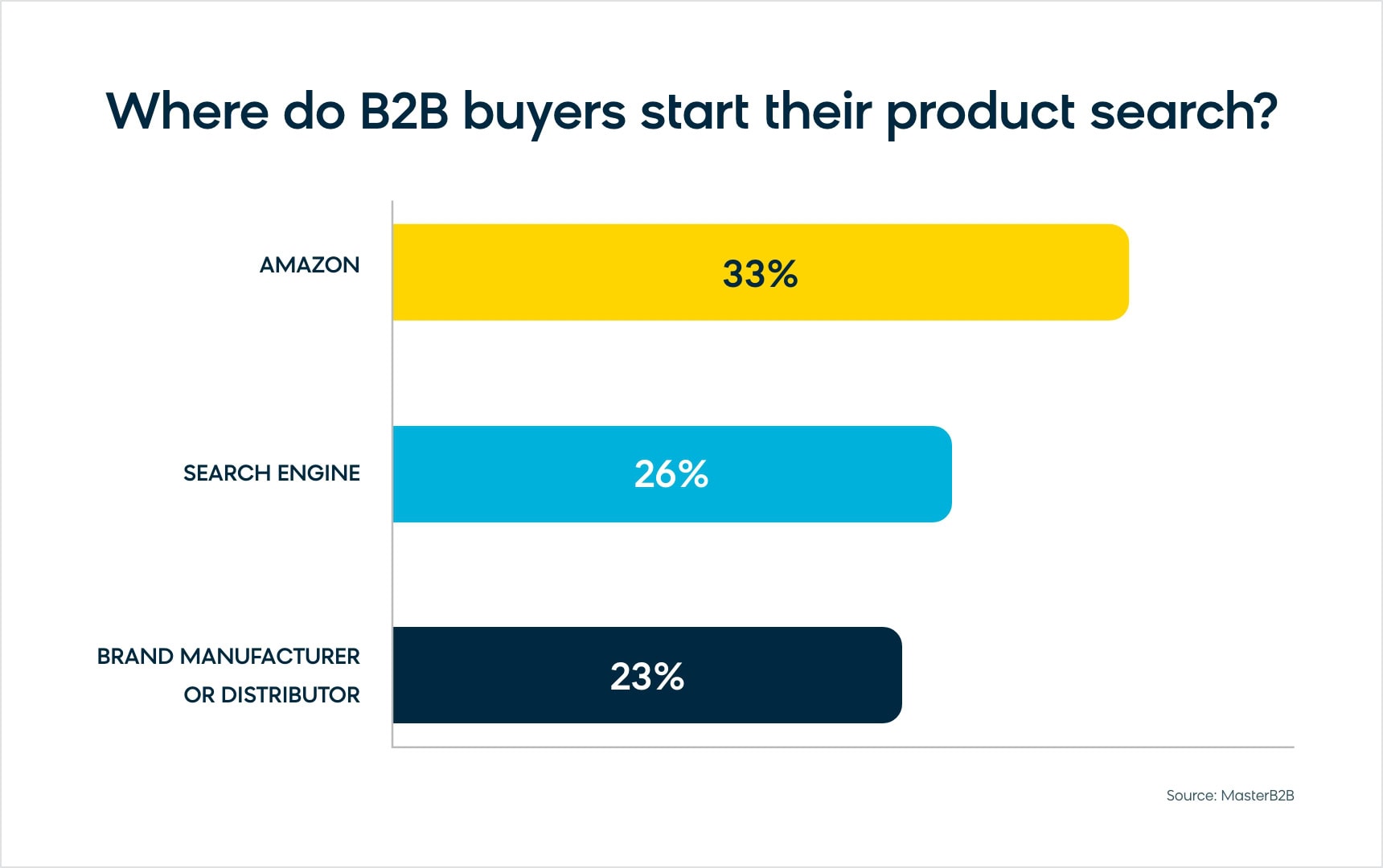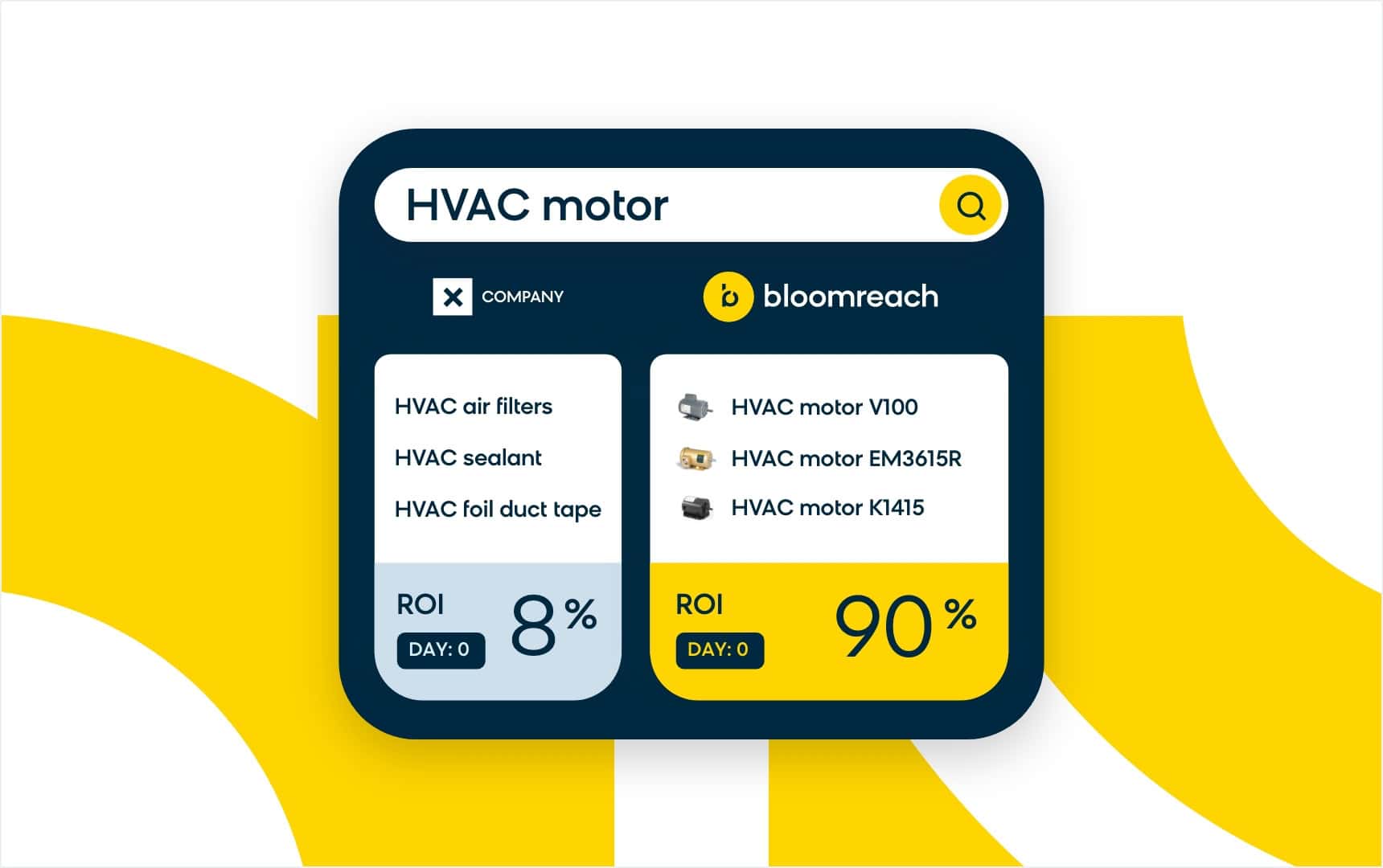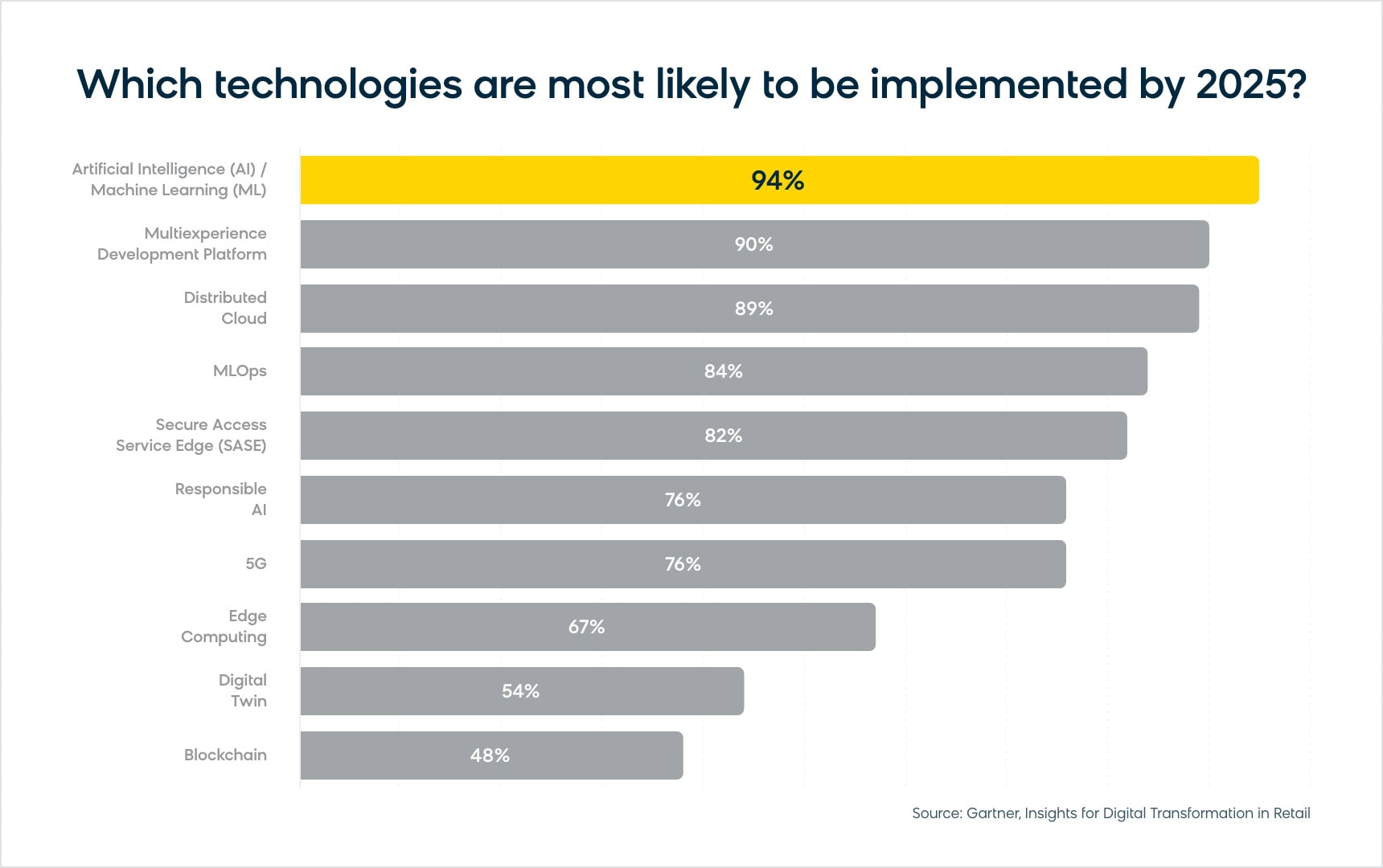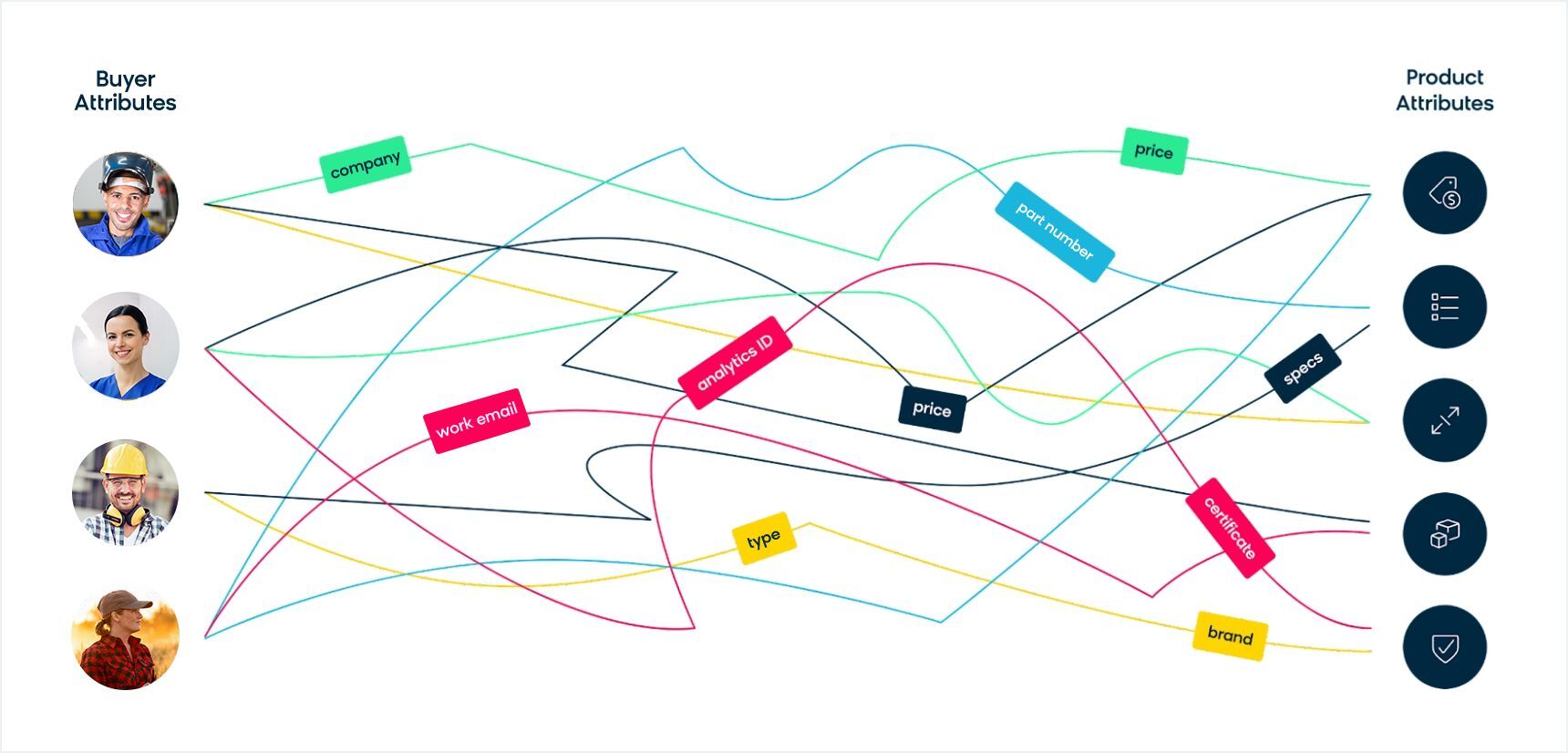As much as some B2B ecommerce practitioners don’t want to believe the sales landscape is shifting from the tried-and-true methods — it is. While salespeople are still important to the purchase journey, they no longer encompass the whole part of the buying process.
Sure, in the past, sales reps could rely on a high-touch approach, which was all about the interpersonal relationships between a brand and its customers, to close in-person sales. But a new generation of B2B buyers has different expectations around the selling process. In fact, a significant portion of B2B buyers these days — 60% being millennials — believe in a seller-free process. They want helpful resources at their fingertips to assist them in researching the best products or services.
That’s why recent findings by MasterB2B — a known authority on B2B commerce strategies that release media and resources around the topic — should come as no surprise, either. In their recent State of B2B Ecommerce Report, their research illustrates that out of the five most popular interactive marketing tactics reported by buyers, “Discussions with Sales or Customer Service” came in last; only 27% of sellers put it in their top three.
This shows a clear disconnect between sellers and executives of B2B companies. Even though distribution businesses have always claimed that trust in their salespeople is one of their biggest assets and differentiators, this approach is proving to not be as impactful in a modern selling environment.
According to the same report, one-third of buyers start researching Amazon, 26% on a search engine, and 23% on a brand manufacturer or industry distributor. Even though many begin their journey on Amazon, 41% of buyers ultimately purchase with the brand they trust, making digital transformation more crucial than ever before.
B2B distributors, who want to change the power dynamic between their company and a third-party marketplace, can compete on experience with a website they can control. So, what’s the best way to do that? Taking the high-touch approach that B2B buyers have known for decades and integrating it with a high-tech approach. Before we get into all of that, though, let’s explore the two different approaches.
What Is a High-Touch Approach in B2B Distribution?
When it comes to B2B distribution, a high-touch approach refers to a model that emphasizes personalized service and strong relationships between the distributor and the buyer. This approach often involves frequent and direct communication, personalized service, and a deep understanding of the buyer’s business needs and goals.
In this model, distributors go beyond simply delivering products or services and take every step necessary to manage customer expectations. These steps are tailored to each buyer’s specific needs and aim to add value to their experience, such as inventory management, after-sales support, and technical assistance. Since the goal of a high-touch approach is to help buyers succeed in their business, existing customers know that all they have to do is pick up the phone whenever they have a problem and speak to their sales representative.
A distributor might assign a dedicated account manager to each high-value customer. This account manager would understand the buyer’s business, anticipate their needs, and ensure they receive the best possible service. Time-tested and exec-approved, a high-touch approach can lead to stronger customer relationships, better customer retention, and ultimately, increased sales and profitability for your business.
Overall, a high-touch approach in B2B distribution is about providing a level of service that goes above and beyond and building long-term, mutually beneficial relationships with buyers. On the other side of the coin, a high-touch approach requires a significant investment in terms of time and resources.
Before we start talking about anything tech-related, let’s dive into the advantages and challenges of a high-touch approach.
The Advantages of a High-Touch Approach
Implementing a high-touch approach in the B2B sector can significantly benefit a business. Here are some of the key advantages:
Deep Customer Relationships
A cornerstone of the high-touch approach is the cultivation of deep, long-lasting relationships with customers. This strategy involves catering to each customer’s unique needs and providing personalized service that goes beyond the typical transactional relationship in B2C. By maintaining regular communication and showing genuine interest in their success, businesses can earn loyalty and trust from new and existing customers. Often, this approach results in a deeper understanding of the customer’s evolving needs and preferences, which leads to more repeat business.
Increased Value Perception
When customers feel like they’re receiving individual attention and superior service, they’re also more likely to perceive a higher value in the products or services they purchase. This value is not necessarily related to the actual cost of the product, however; it’s more about its perceived worth in terms of quality, reliability, and convenience. By creating a sense of heightened value for customers, businesses will encourage buyers to purchase more products or services, make larger purchases per transaction, and provide positive recommendations or referrals that help bring in new customers.
Competitive Differentiation
In today’s competitive marketplace, businesses constantly seek ways to differentiate themselves. A high-touch approach offers an effective way to stand out from the crowd. Companies can position themselves as leaders in customer care and attention by providing exceptional, personalized customer service. This not only makes your business more attractive to potential customers, but it also helps create a unique selling proposition that sets your brand apart from competitors.
The Challenges of a High-Touch Approach
While the high-touch approach has many benefits, it also presents some challenges. These include:
Scalability
Scalability is a significant challenge when implementing a high-touch approach. As the business grows and the customer base inevitably expands, maintaining the same level of personalized service can become increasingly difficult for your salespeople. To stick solely with this approach, businesses will need to strike the right balance between white-glove service and efficiency to ensure they can continue to deliver superior service as they scale operations.
Resource-Intensive
A high-touch approach can be quite resource-intensive. It necessitates significant investments in terms of time, personnel, and finances. To achieve a high standard of customer service, companies must allocate resources toward recruiting, training, and retaining skilled and dedicated staff who possess the expertise and drive to provide the level of personalized service needed. Not only is the time spent on each customer substantially higher, but it may also impose limitations on the number of customers a business can effectively manage due to the extensive attention and care required.
Dependence on Key Personnel
With a high-touch approach, strong relationships are often formed between customers and specific employees. If these key personnel leave the company, it can disrupt the customer relationship, potentially leading to dissatisfaction or even loss of business in the most extreme cases. Businesses will need to implement strategies to manage this risk, such as cross-training staff on multiple business accounts and documenting customer interactions and preferences.
What Is a High-Tech Approach in B2B Distribution?
The high-tech approach in B2B distribution has consistently proven to be a game-changer. To succeed in using it, your business must leverage cutting-edge technology to optimize and enhance the entire product discovery process for your customers, while eliminating unnecessary work for your merchandising practitioners.
Technology allows businesses to automate repetitive tasks, thereby freeing up human resources for more strategic ones. For example, when it comes to product discovery, which is typically executed by valued, high-touch sales reps in B2B, AI-powered search engines are designed to provide precise, relevant, and quick results without human intervention. This happens through machine learning (ML) and natural language processing (NLP).
In other words, AI search bars learn from each interaction on your digital channels to improve their accuracy over time. They can understand contextual clues and natural language queries, leading to more accurate search results. AI also minimizes the time spent on the product manager’s side creating search rules and the buyers’ efforts in finding the right products and information. And with the help of NLP and ML algorithms, distribution businesses can personalize the purchase journey based on insights drawn from their behavior.
All in all, investing in the right technology can make a huge difference in your business’s success — both now and in the future. While there are many priorities to consider in ecommerce, site search often comes up as a main concern for the customer time and again, meaning it’s where you should center your focus. The high-tech approach in B2B distribution is all about harnessing the power of technology to compete with third-party online marketplaces, simplify processes, and deliver value to customers. By investing in ecommerce search, distribution businesses give themselves the means to differentiate themselves and achieve sustainable growth.
The Advantages of a High-Tech Approach
A high-tech approach in B2B distribution involves leveraging advanced ecommerce technologies to enhance the purchasing experience on your website and streamline the accompanying workflows for your ecommerce team. With that being said, here are three advantages of a high-tech approach.
Problem Solving
High-tech approaches, powered by machine learning capabilities, can seamlessly substitute product experts and deliver the same level of problem-solving expertise. Due to their unparalleled capacity to swiftly and accurately analyze massive volumes of data, AI can generate invaluable insights on a large scale — something that would be painstaking to do manually. Moreover, they can assist customers in a manner identical to that of your most knowledgeable product experts, ensuring an exceptional level of support and guidance during all online sales.
Scalability
Scalability is another significant advantage of adopting a high-tech approach. As businesses grow, their operations become more complex, making manual management increasingly challenging. However, with an automated search and merchandising solution, the ability to scale up operations becomes seamless and efficient. First, it allows distributors to manage a greater volume of site searches, as well as product and category pages. Then, they can easily expand their customer base, product range, or digital marketing and merchandising efforts without compromising on operational efficiency or customer service quality. Additionally, it ensures businesses are well-equipped to respond to market changes or business growth opportunities swiftly and effectively.
Improved Customer Experience
With a high-tech approach to site search and merchandising, B2B distributors can significantly enhance the customer experience by providing precise, immediate search results. Ecommerce search technology uses advanced algorithms to understand and interpret complex search queries, reducing the time customers spend sifting through irrelevant results. On the merchandising side of things, AI algorithms can dynamically adjust product presentation based on real-time data and customer behavior, ensuring that each customer sees the most relevant and compelling offerings.
The Challenges of a High-Tech Approach
Despite its many advantages, a high-tech approach also has its own obstacles to tackle:
Cost
Cost can be a significant obstacle when considering an investment in a high-tech approach. Search and merchandising solutions alone entail substantial initial costs for software purchase or licensing, along with ongoing expenses for maintenance, support, and staff training. This can be particularly challenging for small to medium-sized businesses with limited budgets — and even larger companies may balk at the cost if they already have an existing (albeit subpar) solution in place. Plus, implementing a new search and merchandising solution requires time and effort to ensure a smooth transition and could disrupt daily operations, especially if you’re managing multiple point solutions like ecommerce platforms or order payment processing solutions.
Managing Customer Expectations
While a high-tech approach can automate and streamline many customer service processes, it can also create challenges in managing customer expectations. As technology advances, customers often expect instant responses and solutions to their issues. However, while AI and automated systems can handle many queries efficiently, they can still need to catch up when dealing with complex or unique problems that require human intervention. Unfortunately for your business, this can lead to customer frustration and dissatisfaction if their issue isn’t resolved promptly or effectively. Plus, a high-tech approach can sometimes feel impersonal to customers who appreciate a human touch.
Being Disposed in a Product Liability Lawsuit
There’s a danger that’s not often discussed in B2B ecommerce that circles your business like a shark in dangerous waters, even though it’s an age-old problem. Product liability holds those in the supply chain, including distributors, liable for injuries caused by defective products. Before 2019, it was not clear whether ecommerce marketplaces or websites could be held liable for products they sold, but several rulings challenging Amazon changed everything. The courts now focus their attention on where the products are purchased, meaning your business could be held liable for a detective product sold to a customer.
However, these challenges shouldn’t dissuade you from investing in a high-tech approach — they should only encourage you to find the right product discovery tool that can locate and display accurate, detailed, and up-to-date products and information at scale.
How AI Bridges the Gap Between High-Touch and High-Tech
In B2B ecommerce, there’s often a balancing act between the key factors involved in both high-touch and high-tech approaches. But AI technology plays a crucial role in bridging this divide. AI’s ability to analyze segmented buyer data allows it to customize the entire buying journey, beginning with personalized search results. With AI, you can foster the high-touch experience that people still crave while aligning with buyers’ shifting expectations. At the same time, AI automates repetitive tasks to boost operational efficiency — a fundamental component of the high-touch approach.
Simply put, we shouldn’t see these two strategies as working against one another; it takes the marrying of both approaches to be successful in the B2B ecommerce landscape.
3 Ways To Apply AI to Your B2B Ecommerce Strategy
Check out these three applications of AI that can significantly enhance your B2B ecommerce strategy.
Site Search
AI-powered site search is revolutionizing the way customers interact with ecommerce websites. AI uses NLP and ML to understand the context and intent behind search queries, delivering more accurate and relevant results. Over time, it learns from each buyer interaction and continuously refines its understanding of your target audience, leading to progressively better search outcomes. This makes self-service easier, so customers can find what they’re looking for without human intervention. It also provides businesses with valuable insights into buying preferences and behaviors, with the end goal to increase revenue, average order value, and return on investment.
Segmentation
Segmentation is a vital element in a successful B2B distributor’s ecommerce strategy, and AI enhances its effectiveness significantly. AI can process enormous volumes of data and pinpoint patterns and trends that may go unnoticed by humans. This in turn empowers distributors to segment their buyers into refined, intricate groups and target them in their online sales process. These groups are based on criteria like industry, product application, and the searcher’s role within the organization. Believe it or not, distributors can then customize their search and merchandising initiatives to each identified segment, providing personalized experiences that foster engagement and cultivate loyalty.
Digital Merchandising
Though merchandising typically isn’t a traditional component of B2B commerce, it’s gaining traction in the market because AI automation makes it more approachable and generates significant results. Machine learning algorithms can harness and analyze data, enabling B2B distributors to tailor their product offerings to meet the needs and preferences of each segment, creating a more targeted and relevant purchasing experience. AI can also help your team optimize products at the SKU level, group similar products together for better discoverability, and more — the possibilities are limitless.
Bloomreach Discovery Combines High-Tech With High-Touch
Fusing high-touch and high-tech approaches is critical for B2B distributors. High-tech solutions — like AI-powered site search and merchandising — provide scalability, efficiency, and a competitive edge. They should also harmoniously execute the high-touch interactions that humanize the product discovery process. Striking this balance allows businesses to streamline operations while preserving the invaluable human element that fosters deeper connections.
Remember, the future of B2B distribution relies upon embracing these innovative approaches. By harnessing the power of AI and human ingenuity, distribution businesses can enhance operational efficiency and drive revenue growth and customer loyalty.
To learn more about AI in ecommerce, watch The Edge Summit on-demand. This library of content will help you to better understand how AI is impacting digital commerce and why things will never be the same online.





















